Vagina: Difference between revisions
| Line 34: | Line 34: | ||
[[Gardnerella vaginalis]] | [[Gardnerella vaginalis]] | ||
[[image:g. vag.jpg|thumb| | [[image:g. vag.jpg|thumb|250px|Gardnerella Vaginalis [http://www.pubmedcentral.nih.gov/pagerender.fcgi?artid=358241&pageindex=3].]] | ||
dsfgsdfgsdfgsfdgsg | |||
Sfg | |||
sdfg | |||
s | |||
fgs | |||
fgs | |||
dfg | |||
sfg | |||
sfg | |||
sdf | |||
gs | |||
fgs | |||
dfgs | |||
dfgs | |||
dfg | |||
sfg | |||
sfgsfgsfgs | |||
[[Streptococcus]] | [[Streptococcus]] | ||
Revision as of 22:12, 24 August 2008
Description of Niche
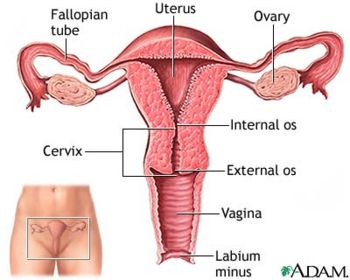
The vagina is located directly anterior to the anus and below the urethral opening. It is a muscular passageway which connects the uterus to the exterior genitals. Immediately outside the vaginal opening is the labia minora, which is also known as the inner lips, which then leads into the labia majora, the outer lips. Typically after puberty, the labia majora is covered with hair, otherwise known as mons pubis. All together, the labia minora, labia majora, clitoris, mons pubis, and vestibule is called the vulva. Neighboring parts surrounding the vagina also include the clitoris, urethral orifice, vestibule, and hymen. The clitoris is a hard round organ directly on top of the vulva and encircles and extends into the vagina. This organ is to supply pleasure during sexual intercourse and is at the anterior end joining the labia minora. The urethral orifice lies above the vagina and below the clitoris and functions to excrete urine stored in the urinary bladder. The hymen is a membrane which acts like a flap partially covering the opening of the vagina.
Physical Conditions
With an approximate pH value ranging from 3.8 to 4.5, the vagina functions in a relatively acidic environment. This pH range is required for a healthy vagina for protection purposes. Any pH value higher than 4.5 potentially leads to serious problems. The vagina is typically at or slightly above normal body temperature. This acidic environment is important to maintain so that certain pathogens can not cultivate in that area. But usually this is not an issue because the acidic environment makes it impossible for the pathogens to survive. It is important for moisture maintenance to prevent dryness and irritation. To the left and right of the vaginal opening are two oval shaped vestibular glands, otherwise known as Bartholon glands, which secrete mucous for lubrication purposes. During sexual arousal, these glands also secrete addition lubricants to prevent pain during intercourse. Throughout a woman’s life, there are fluctuations in the amount of estrogen produced in the body. Estrogen assures that the tissues surrounding the vagina retains elasticity and retains moisture. However, when a woman experiences menopause, estrogen levels decreases dramatically which ultimately leads to vaginal dryness, irritation, and decrease in tissue elasticity.
Influence by Adjacent Communities
Is your niche close to another niche or influenced by another community of organisms?
Conditions under which the environment changes
Do any of the physical conditions change? Are there chemicals, other organisms, nutrients, etc. that might change the community of your niche.
A mathematical model for kefiran production by Lactobacillus kefiranofaciens was established, in which the effects of pH, substrate and product on cell growth, exopolysaccharide formation and substrate assimilation were considered. The model gave a good representation both of the formation of exopolysaccharides (which are not only attached to cells but also released into the medium) and of the time courses of the production of galactose and glucose in the medium (which are produced and consumed by the cells). Since pH and both lactose and lactic acid concentrations differently affected production and growth activity, the model included the effects of pH and the concentrations of lactose and lactic acid. Based on the mathematical model, an optimal pH profile for the maximum production of kefiran in batch culture was obtained. In this study, a simplified optimization method was developed, in which the optimal pH profile was determined at a particular final fermentation time. This was based on the principle that, at a certain time, switching from the maximum specific growth rate to the critical one (which yields the maximum specific production rate) results in maximum production. Maximum kefiran production was obtained, which was 20% higher than that obtained in the constant-pH control fermentation. A genetic algorithm (GA) was also applied to obtain the optimal pH profile; and it was found that practically the same solution was obtained using the GA.
Microbes Present
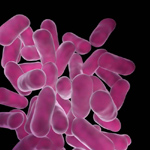
Lactobacillus is one of the main microorganisms responsible for maintaining a healthy vaginal flora. Its production of Lactic acid contribute to the vaginal acidic environment. There are different strains of Lactobacillus able to colonize the vaginal flora, however, those with maximal adherence to the epithelium such as Lactobacillus acidophilus help against bacterial vaginosis (BV) due to their hydrogen peroxide producing capabilities. Bacterial Vaginosis is caused when there is a lack of Lactobacillus in the vaginal flora, allowing various types of microbes to inhabit the environment leading to complications such as pelvic inflammatory disease and sexually transmitted diseases like HIV.
Current research is identifying the best strain of Lactobacillus in order to recolonize a healthy vaginal flora. McLean and Rosenstein studied several Lactobacillus strain in order to identify the best strain able to re-colonize the vaginal flora of women with BV. This strain should be able to produce sufficient H2O2, be able to inhibitory activity against BV bacteria, acid production, and have strong adherence ability to the vaginal epithelial cell (VEC). They found two strains of the L. acidophilus (61701 and 48101) to have such characteristics (2).
Sha et al. show a correlation between Lactobacillus and BV, however, an inverse correlation with HIV (1). Furthermore, BV bacteria have been shown to upregulate HIV expression. Therefore, by suntanning a healthy vaginal flora by preventing BV infections, Lactobacillus acidophilus can help combat sexually transmitted diseases. Also, Lactobacillus Hydrogen Peroxide has been shown to have virucidal effects allowing the vaginal flora to have some protection against pathogens (2).
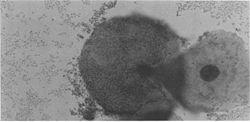
dsfgsdfgsdfgsfdgsg Sfg sdfg s fgs fgs dfg sfg sfg sdf gs fgs dfgs dfgs dfg sfg sfgsfgsfgs
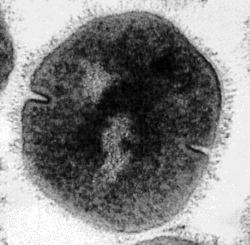
Group B Beta Streptococcus (S. Agalacitae)
Group B streptococci (GBS) is a gram-positive coccus belonging to the phylum Firmicates that colonize the vaginal and gastrointestinal/rectal tract of healthy adults . The polysaccharide antiphagocytic capsule is GBS’s most prominent virulence factor as it binds maximally onto vaginal epithelial cells in the acidic pH levels of vaginal mucosa where attachment does not depend on capsular serotype or bacterial viability. The distal vagina is more frequently colonized than rectal sites in both pregnant and non-pregnant adults. GBS is acquired by infants born to colonized mothers via vertical transmission in 29-72% of cases by a process undergoing adherence to vaginal epithelial cells and resistance to mucosal immune defenses such as immunoglobulin A (IgA).(224)* During pregnancy, GBS may ascent into the amniotic cavity by penetrating placental membranes, or the infant can acquire GBS during passage through the birth canal. (181)*. GBS can penetrate alveolar epithelial and pulmonary endothelial cells allowing GBS to have access into the bloodstream. Infants acquire GBS via vertical transmission from the mothers vaginal and/or gastrointestinal tract either prior to delivery in the uterus or from delivery. Once thought to be pathogens of domestic animals, GBS is the leading cause of neonatal sepsis in humans resulting in early-onset infections with pneumonia, septicemia and late-onset with meningitis or bacteremia.
Pathogenesis of GBS neonatal infection GBS has a evolutionary relationship between the bacterium and the host. There exists selective pressures for GBS interaction with host to establish colonization in host and ensure transmission to newly susceptible hosts(neonates). Host factors play a significant role in determining the pathogenic potentials of GBS.
Other non-microbes present
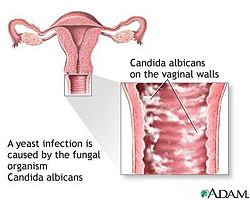
Bacteria Viruses Fungi
Microbe interaction with each other
Describe any negative (competition) or positive (symbiosis) behavior
bacterial vaginosis and gardnerella vaginalis
Microbes environment change
Do they alter pH, attach to surfaces, secrete anything, etc. etc.
Metabolism that affects their environment
Do they ferment sugars to produce acid, break down large molecules, fix nitrogen, etc. etc.
Current Research
Antimicrobial Protein produced by vaginal Lactobacillus acidophilus that inhibits Gardnerella Vaginalisis
Enter summaries of the most recent research. You may find it more appropriate to include this as a subsection under several of your other sections rather than separately here at the end. You should include at least FOUR topics of research and summarize each in terms of the question being asked, the results so far, and the topics for future study. (more will be expected from larger groups than from smaller groups)
http://www.pubmedcentral.nih.gov/articlerender.fcgi?tool=pubmed&pubmedid=16542416
http://www.nature.com/ismej/journal/v1/n2/full/ismej200712a.html
References
(1)Female Genital-Tract HIV Load Correlates Inversely with Lactobacillus Species but Positively with Bacterial Vaginosis and Mycoplasma hominis Beverly E. Sha, M. Reza Zariffard, Qiong J. Wang, Hua Y. Chen, James Bremer, Mardge H. Cohen, and Gregory T. Spear The Journal of Infectious Diseases 2005 191:1, 25-32
(2) McLean, N. W., and I. J. Rosenstein. 2000 Characterisation and selection of a Lactobacillus species to re-colonise the vagina of women with recurrent bacterial vaginosis J. Med. Microbiol. 49 543–552
(3)The Identification of Vaginal Lactobacillus Species and the Demographic and Microbiologic Characteristics of Women Colonized by These Species May A. D. Antonio, Stephen E. Hawes, and Sharon L. Hillier The Journal of Infectious Diseases 1999 180:6, 1950-1956
Streptococcal infections : clinical aspects, microbiology, and molecular pathogenesis / edited by De New York : Oxford University Press, 2000. P. 223-230, 183-186.
Contemporary therapy in obstetrics and gynecology / editors, Scott B. Ransom ... [et al.] Philadelphia : W.B. Saunders, c2002. p. 148-151.
Edited by [Jason Wong, Yumi Honda, Elieth Martinez, Raymond Villar, Eunice Kim, Whitney La], students of Rachel Larsen
